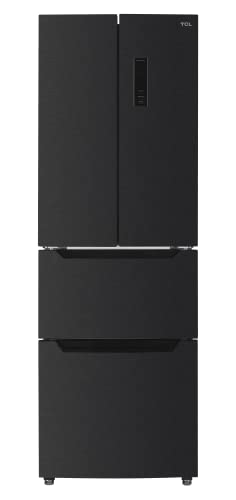A Proficient Rant About Fridge UK
The Comprehensive Guide to Refrigerators in the UK
Fridges are an important appliance in every family, serving a crucial function in food conservation and security. The UK market uses a varied variety of fridge types, sizes, functions, and brands. This short article aims to provide an extensive understanding of fridges available in the UK, including their features, energy performance, and aspects to think about when making a purchase.
Kinds Of Refrigerators Available in the UK
When searching for a refrigerator, it is necessary to understand the different types offered. Each type features its own set of features and functions, dealing with different requirements and preferences. The most common types of fridges discovered in the UK consist of:
1. Top Freezer Refrigerators
- Description: The conventional design, including the freezer compartment on top.
- Pros: More economical, roomy, simple access to fresh food.
- Cons: Limited freezer area, the top may be less convenient for bulk products.
2. Bottom Freezer Refrigerators
- Description: Freezer is situated at the bottom, enabling much easier access to fresh food.
- Pros: Greater convenience, better presence of fresh items.
- Cons: Usually more expensive, some may have problem with large frozen products.
3. Side-by-Side Refrigerators
- Description: Features two vertical compartments, one for the fridge and one for the freezer.
- Pros: Ample storage space, simple to gain access to both frozen and fresh foods.
- Cons: Wider footprint, they may not fit in smaller kitchen areas.
4. French Door Refrigerators
- Description: Combines functions of bottom freezers and side-by-sides, with 2 doors for the fridge on top.
- Pros: Stylish style, roomy, and often includes sophisticated features.
- Cons: Higher cost point, aligns improperly with smaller sized kitchen area layouts.
5. Compact Refrigerators
- Description: Smaller models designed for restricted areas.
- Pros: Ideal for small apartments or offices, energy-efficient.
- Cons: Limited storage capability, might do not have functions.
6. Integrated Refrigerators
- Description: Designed to mix perfectly with kitchen cabinets.
- Pros: Custom fit, aesthetic appeal, increases home worth.
- Cons: Higher expense, might provide less flexibility in positioning.
7. Smart Refrigerators
- Description: Equipped with Wi-Fi and smart technology functions.
- Pros: Advanced includes like touch screens and internal video cameras.
- Cons: Expensive, more intricate to repair.
Refrigerator Type
Accessibility
Average Price Range
Energy Efficiency
Top Freezer
Moderate
₤ 300 – ₤ 600
Average
Bottom Freezer
High
₤ 400 – ₤ 800
Above Average
Side-by-Side
Easy
₤ 800 – ₤ 1500
Differs
French Door
High
₤ 800 – ₤ 2000
High
Compact
Restricted
₤ 200 – ₤ 500
Average
Integrated
Custom
₤ 1000 – ₤ 2500
High
Smart
Variable
₤ 1200+
High
Secret Features to Consider
- Energy Efficiency: Look for designs that are energy-efficient. In the UK, devices are rated from A (most efficient) to G (least efficient). An A+ ranking and above can cause substantial energy savings.
- Capacity: Choose a fridge with sufficient capability for your family. A basic guideline is 100-200 liters per individual.
- Sound Level: Consider designs that run quietly, specifically if the kitchen is near living areas.
- Cooling Technology: Features like frost-free innovation are worth the investment, as they decrease maintenance.
- Adjustable Shelves: Having adjustable shelves boosts the versatility to save larger products.
- Temperature level Control: Check for easy-to-use temperature controls and zones for various kinds of food.
- Design: Choose the style and color that matches your cooking area visual, whether you choose a contemporary stainless-steel look or a classic retro finish.
Buying Tips
- Determine Your Needs: Consider your cooking practices, family size, and cooking area space.
- Set a Budget: Refrigerators been available in different rate ranges. Establish a budget plan before you begin going shopping.
- Research Study Energy Ratings: Invest in energy-efficient designs to save on utility expenses.
- Check out Reviews: User experiences can offer insights into reliability and efficiency.
- Compare Brands: Some brands are known for their resilience while others may use more ingenious features.
Often Asked Questions (FAQs)
1. How long do refrigerators usually last?
- Fridges typically last in between 10 to 20 years, depending upon the brand and how well they are maintained.
2. Exist any maintenance suggestions for prolonging the life of a refrigerator?
- Frequently tidy the coils, inspect the door seals, and occasionally thaw if necessary to maintain optimal performance.
3. What is the very best size refrigerator for a family of four?
- For a family of 4, a refrigerator with a capacity of around 400-600 liters is typically sufficient.
4. Do I require to fret about energy consumption when buying a refrigerator?
- Yes, energy intake is essential. Look for systems with high energy effectiveness rankings to decrease month-to-month costs.
5. Should I select a fridge with a water and ice dispenser?
- This function can be practical, specifically for families. Nevertheless, it may require more maintenance than standard models.
Acquiring a refrigerator is a considerable choice for any household in the UK. With numerous types available, each with its unique features and benefits, it is crucial to examine specific needs before deciding. By thinking about this article as energy performance, capacity, and style aesthetic appeals, consumers can select a fridge that aligns well with their lifestyle, eventually boosting their cooking area experience while protecting food quality and freshness.
